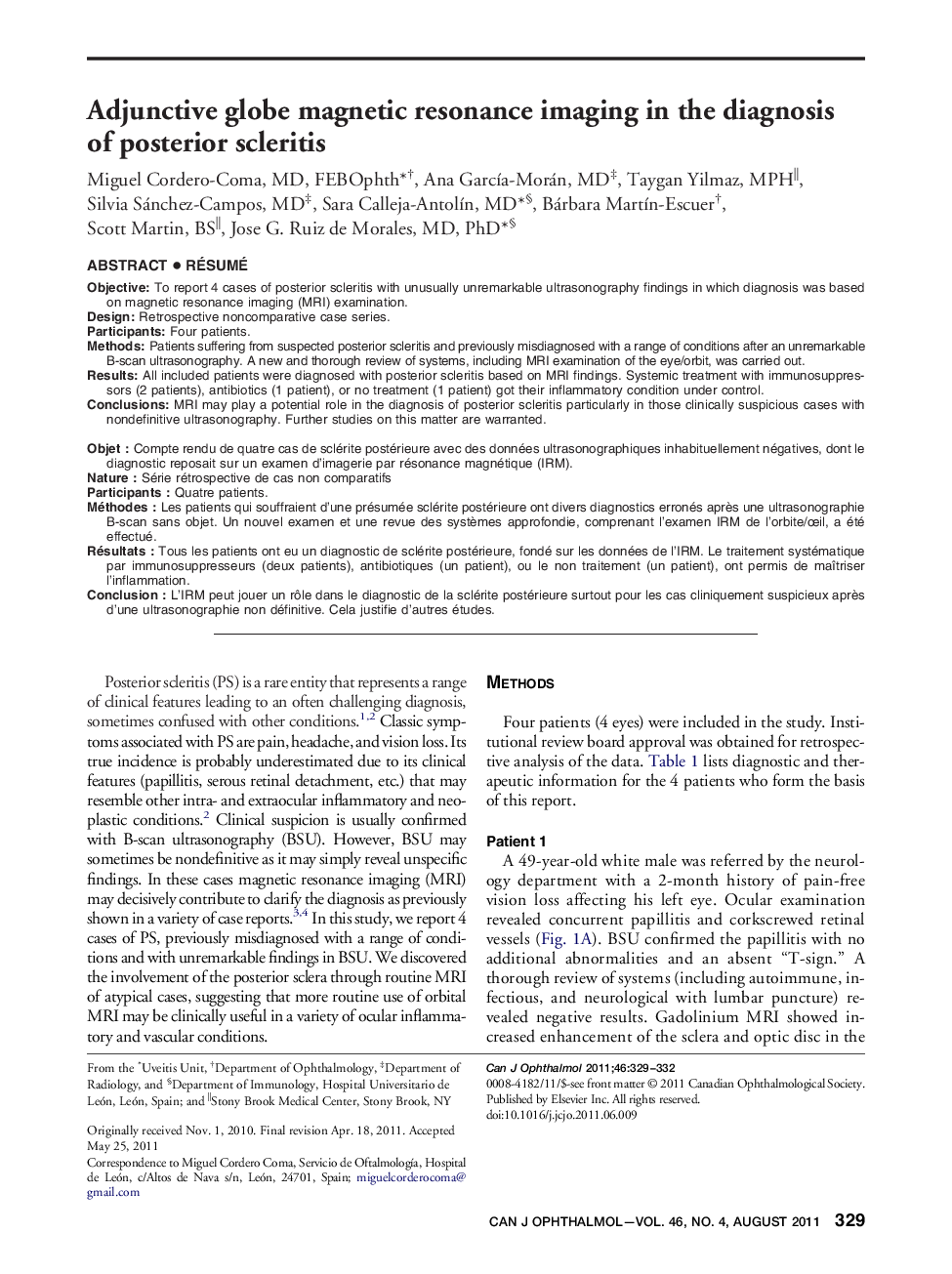| Article ID | Journal | Published Year | Pages | File Type |
|---|---|---|---|---|
| 4009614 | Canadian Journal of Ophthalmology / Journal Canadien d'Ophtalmologie | 2011 | 4 Pages |
ObjectiveTo report 4 cases of posterior scleritis with unusually unremarkable ultrasonography findings in which diagnosis was based on magnetic resonance imaging (MRI) examination.DesignRetrospective noncomparative case series.ParticipantsFour patients.MethodsPatients suffering from suspected posterior scleritis and previously misdiagnosed with a range of conditions after an unremarkable B-scan ultrasonography. A new and thorough review of systems, including MRI examination of the eye/orbit, was carried out.ResultsAll included patients were diagnosed with posterior scleritis based on MRI findings. Systemic treatment with immunosuppressors (2 patients), antibiotics (1 patient), or no treatment (1 patient) got their inflammatory condition under control.ConclusionsMRI may play a potential role in the diagnosis of posterior scleritis particularly in those clinically suspicious cases with nondefinitive ultrasonography. Further studies on this matter are warranted.
RésuméObjetCompte rendu de quatre cas de sclérite postérieure avec des données ultrasonographiques inhabituellement négatives, dont le diagnostic reposait sur un examen d'imagerie par résonance magnétique (IRM).NatureSérie rétrospective de cas non comparatifsParticipantsQuatre patients.MéthodesLes patients qui souffraient d'une présumée sclérite postérieure ont divers diagnostics erronés après une ultrasonographie B-scan sans objet. Un nouvel examen et une revue des systèmes approfondie, comprenant l'examen IRM de l'orbite/œil, a été effectué.RésultatsTous les patients ont eu un diagnostic de sclérite postérieure, fondé sur les données de l'IRM. Le traitement systématique par immunosuppresseurs (deux patients), antibiotiques (un patient), ou le non traitement (un patient), ont permis de maîtriser l'inflammation.ConclusionL'IRM peut jouer un rôle dans le diagnostic de la sclérite postérieure surtout pour les cas cliniquement suspicieux après d'une ultrasonographie non définitive. Cela justifie d'autres études.
